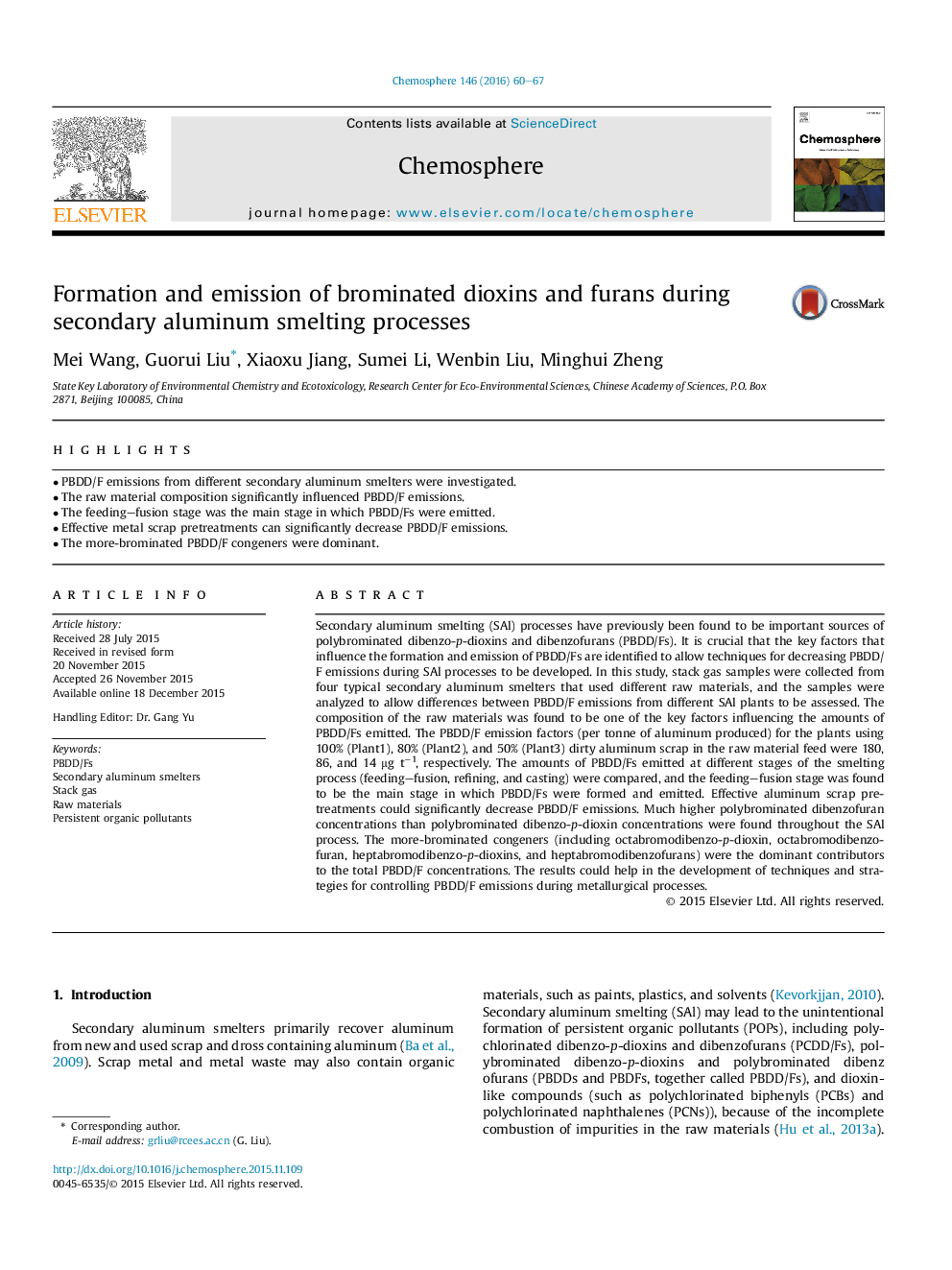| کد مقاله | کد نشریه | سال انتشار | مقاله انگلیسی | نسخه تمام متن |
|---|---|---|---|---|
| 4407928 | 1618825 | 2016 | 8 صفحه PDF | دانلود رایگان |
• PBDD/F emissions from different secondary aluminum smelters were investigated.
• The raw material composition significantly influenced PBDD/F emissions.
• The feeding–fusion stage was the main stage in which PBDD/Fs were emitted.
• Effective metal scrap pretreatments can significantly decrease PBDD/F emissions.
• The more-brominated PBDD/F congeners were dominant.
Secondary aluminum smelting (SAl) processes have previously been found to be important sources of polybrominated dibenzo-p-dioxins and dibenzofurans (PBDD/Fs). It is crucial that the key factors that influence the formation and emission of PBDD/Fs are identified to allow techniques for decreasing PBDD/F emissions during SAl processes to be developed. In this study, stack gas samples were collected from four typical secondary aluminum smelters that used different raw materials, and the samples were analyzed to allow differences between PBDD/F emissions from different SAl plants to be assessed. The composition of the raw materials was found to be one of the key factors influencing the amounts of PBDD/Fs emitted. The PBDD/F emission factors (per tonne of aluminum produced) for the plants using 100% (Plant1), 80% (Plant2), and 50% (Plant3) dirty aluminum scrap in the raw material feed were 180, 86, and 14 μg t−1, respectively. The amounts of PBDD/Fs emitted at different stages of the smelting process (feeding–fusion, refining, and casting) were compared, and the feeding–fusion stage was found to be the main stage in which PBDD/Fs were formed and emitted. Effective aluminum scrap pretreatments could significantly decrease PBDD/F emissions. Much higher polybrominated dibenzofuran concentrations than polybrominated dibenzo-p-dioxin concentrations were found throughout the SAl process. The more-brominated congeners (including octabromodibenzo-p-dioxin, octabromodibenzofuran, heptabromodibenzo-p-dioxins, and heptabromodibenzofurans) were the dominant contributors to the total PBDD/F concentrations. The results could help in the development of techniques and strategies for controlling PBDD/F emissions during metallurgical processes.
Journal: Chemosphere - Volume 146, March 2016, Pages 60–67
